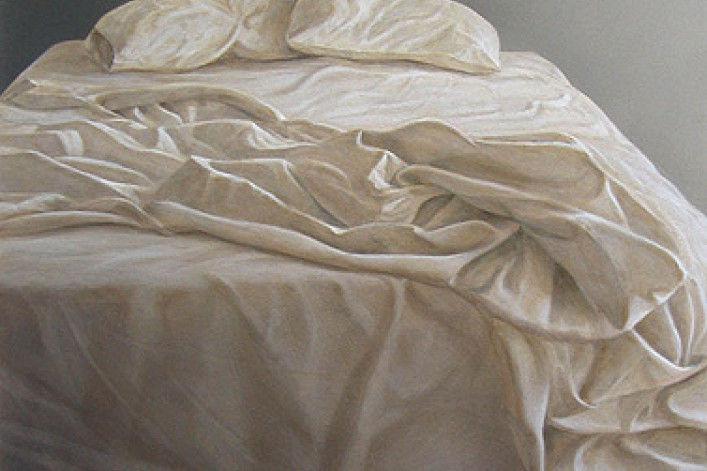The morning after: What we learned at last night's bed bug panel

BrickUnderground attended last night’s rock-star bed bug panel at the Museum of the City of New York, featuring some figures with cult-like followings in the bed-bugged world.
Panelists included Lou Sorkin, an entomologist at the American Museum of Natural History who famously lets his bed bug colonies feed upon on him; London-based pest management expert David Cain; and NewYorkvsBedBugs.org activist-blogger Renee Corea.
Some highlights & takeaways:
- Sorkin warmed up the crowd with a slideshow tour-de-force of infested apartments so graphic that we wanted to throw out all our furniture and rent a metal cube to sleep in. (Though, as he pointed out using a photo of a heavily infested metal bed frame, metal does not actually keep the bed bugs away.) Besides finding bed bugs in the usual places (mattresses, beneath seat cushions etc), Sorkin showed other bed bug abodes, including fiberoptic cable lines, electrical wiring, a chandelier base, inside the smoke alarm, behind peeling baseboard molding and at the top of picture-rail molding.
- In its lifetime, a bed bug goes through as many “looks” as a fashion model. Some physical changes correspond to the bug’s stage of life. “Everybody’s looking for apple seeds,” Sorkin said, when in fact there are translucent white nymphs, minute eggs and various sizes of so-called “instar” that look like (and are) adults in miniature. But their appearance also depends on how recently they’ve fed: Not only does their color change (from pale to dark brown) afterward, but their shape can also morph from round and plump to elongated football.
- Newly hatched nymphs can survive up to six weeks without food. And a well-fed mother bug that just gave birth to a half-dozen egglets someplace—say, inside your purse or suitcase—can hang out there peacefully with her spawn for about a week before stirring for food.
- Cain, who has treated 18,000 infestations in seven years, calls the bed bug problem a “global pandemic,” as every country in the world now reports them.
- Back in 1930s London, a third of all dwellings (that’s dwellings, not buildings) had bed bugs, and the problem was taken so seriously that infested buildings that were scheduled for demolition were exterminated prior to being destroyed, lest the bugs disperse.
- Bed bugs resurged in the late 90s primarily because our institutional memory as a society failed—we stopped taking precautions about bed bugs and even forgot what they looked like. Education is fundamental. Translation: This isn’t just “the city’s” problem or the landlord’s—we are all responsible for learning enough about bed bugs to mount a common defense. And we are all responsible for helping people who can’t afford bed bug treatment, both as a matter of social justice and because our bed-bug-free future depends on theirs.
- Panelist and NYC Councilmember Gale Brewer observed that a few years ago, only about four exterminators in NYC really knew what they were doing. Due to education, that number has increased dramatically.
- In other good news, a city law was recently passed requiring landlords (or condo/co-op boards) to inspect and treat apartments connected horizontally or vertically to an infested one. [UPDATE 1/19/11: According to Renee Corea, this is still in the works and is not yet a law formally announced or implemented by the city.] However, agreed the experts, the law needs to be expanded to include apartments across the hall too. (See New clues on spread of bed bugs through apartment buildings).
- On average, the cost to prepare and treat an apartment for bed bugs is around $5,000.
A Q&A session at the end revealed a deep thirst among the 100 or so attendees for practical information on everything from how to tell if your exterminator knows what he’s doing to what people can do to protect themselves.
If nothing else, recommended Cain, conduct a thorough monthly inspection of your bed.
Councilmember Brewer shared her personal anti-bed bug regimen:
- Encasements surround her box springs and mattresses
- When her kids come home from college, they must put their things inside a PackTite for heat treatment, and then wash and dry their belongings. Houseguests also must put their suitcases in the Packtite.
- Her bed legs sit on top of "interceptors" designed to trap bugs heading up or down.
- Street-scavenged items are not allowed inside her apartment or office. Staff members who violate this rule may find themselves out of a job.
That sounds like solid advice to us. For more advice, see How to Bed Bug Proof Your NYC Apartment.



























